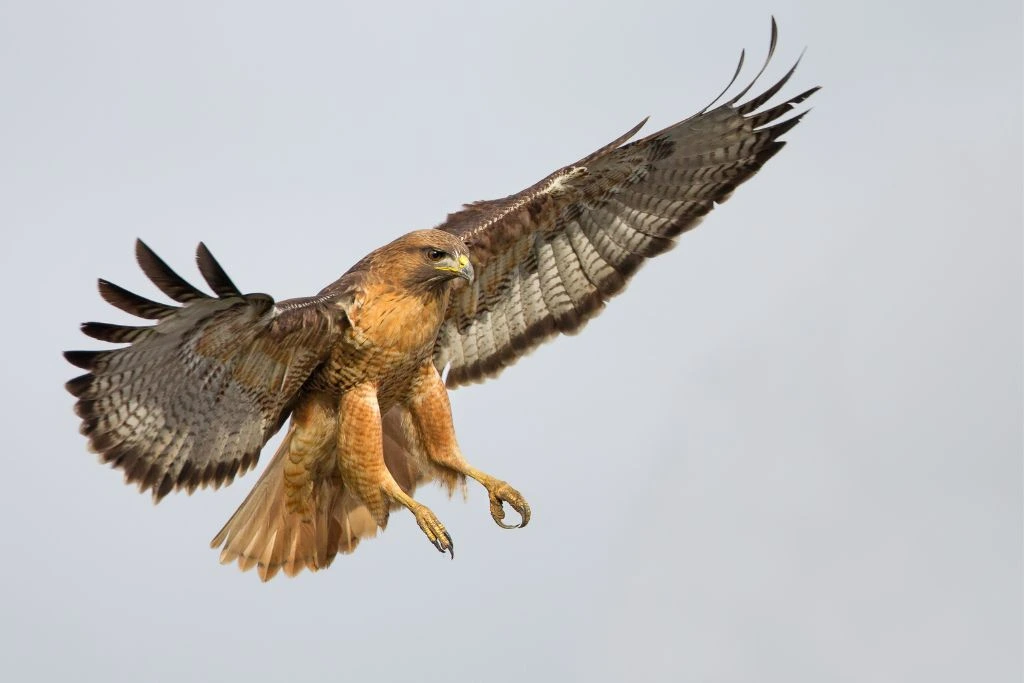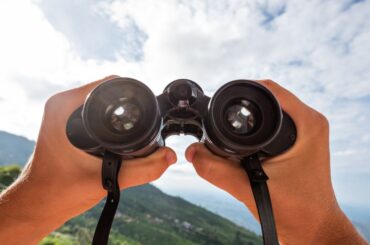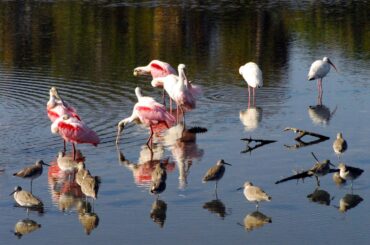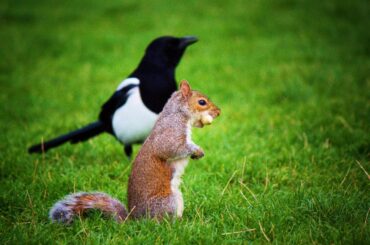Hawks are magnificent birds, known for their sharp talons and keen eyesight. They’re vital to the environment because of the role they play in preserving balance. Because they are top predators and expert hunters, they play an important role in maintaining environmental balance by modulating prey populations.
Eagles, foxes, and coyotes are among the natural enemies that hawks may encounter, albeit infrequently. Understanding the predators of hawks is vital for comprehending their role in ecosystems and fostering an appreciation for the delicate balance of nature. Protecting hawks and the ecosystems they call home requires us to acknowledge the dangers they face and put conservation practices into action.
The Top Predators of Hawks
Hawks, like any other animal, are vulnerable to predators and natural adversaries. Learn about the interesting lives of the top hawk predators and discover who can stand up to them.
Eagles
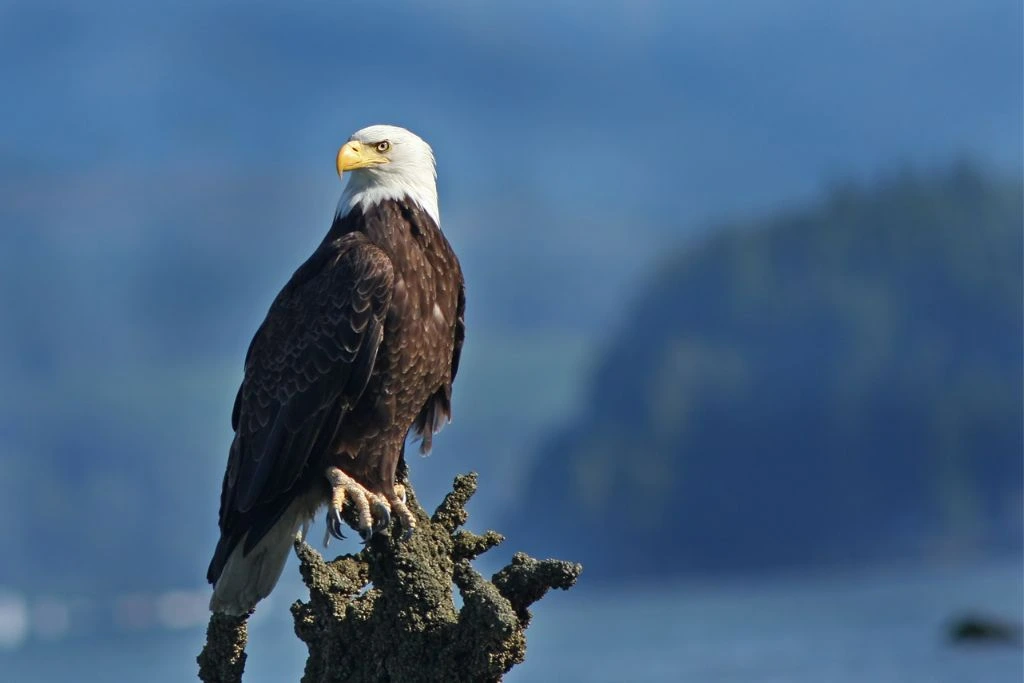
Eagles are majestic birds of prey, known for their impressive size and soaring flight, and are among the top predators that pose a threat to hawks. With their powerful beaks, sharp talons, and extraordinary vision, eagles are formidable hunters, capable of capturing a wide range of prey. Even though eagles aren’t the only predators of hawks, they can still conflict with them due to territorial disputes or encounters in places with scarce food.
When it comes to hunting hawks, eagles employ their exceptional aerial skills and hunting prowess. Their eyesight allows them to spot even the slightest movements from great distances. They take their surroundings from heights, such as above a tree or flying through the air.
Once they locate a hawk in flight or at a vulnerable moment, eagles rely on their remarkable speed and agility to execute swift attacks.
Owls
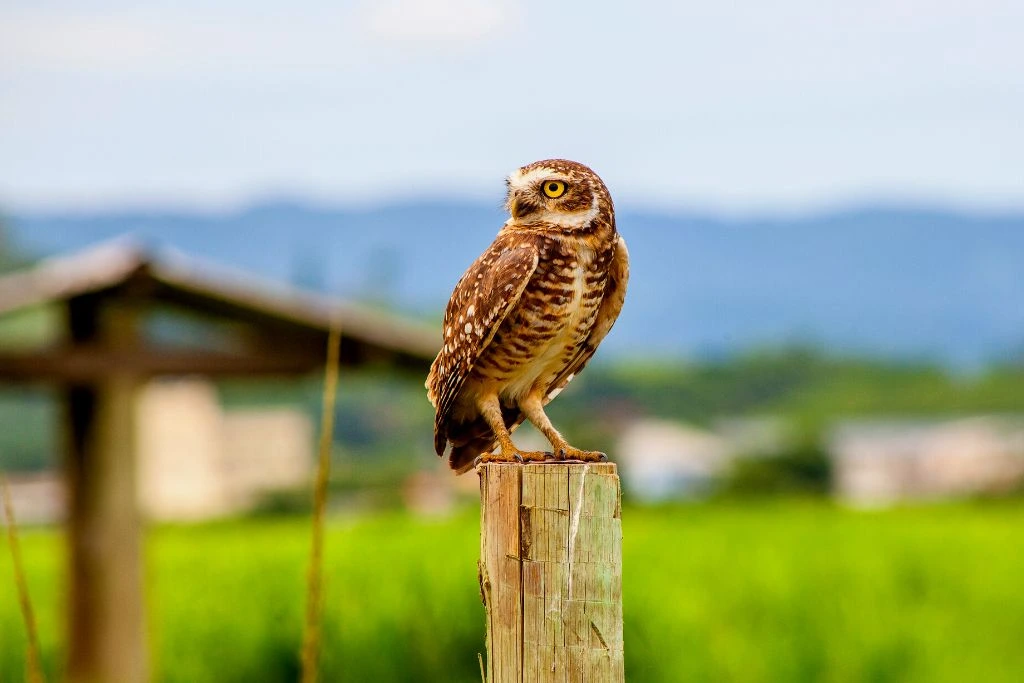
Owls are enigmatic nocturnal birds, known for their silent flight and piercing hoots, and are formidable predators that can be dangerous to hawks. They are efficient nighttime hunters because of the particular adaptations they’ve developed to hunt in dim light.
While they primarily prey on small mammals, birds, and rodents, certain owl species have been observed hunting hawks. Their stealthy nature and exceptional nocturnal vision give them an advantage in surprising their prey, including hawks.
When targeting hawks, owls rely on stealth, camouflage, and precision. With their ability to fly silently due to specialized feathers that minimize sound, owls can approach their prey undetected, making it difficult for hawks to anticipate their presence.
Raccoons
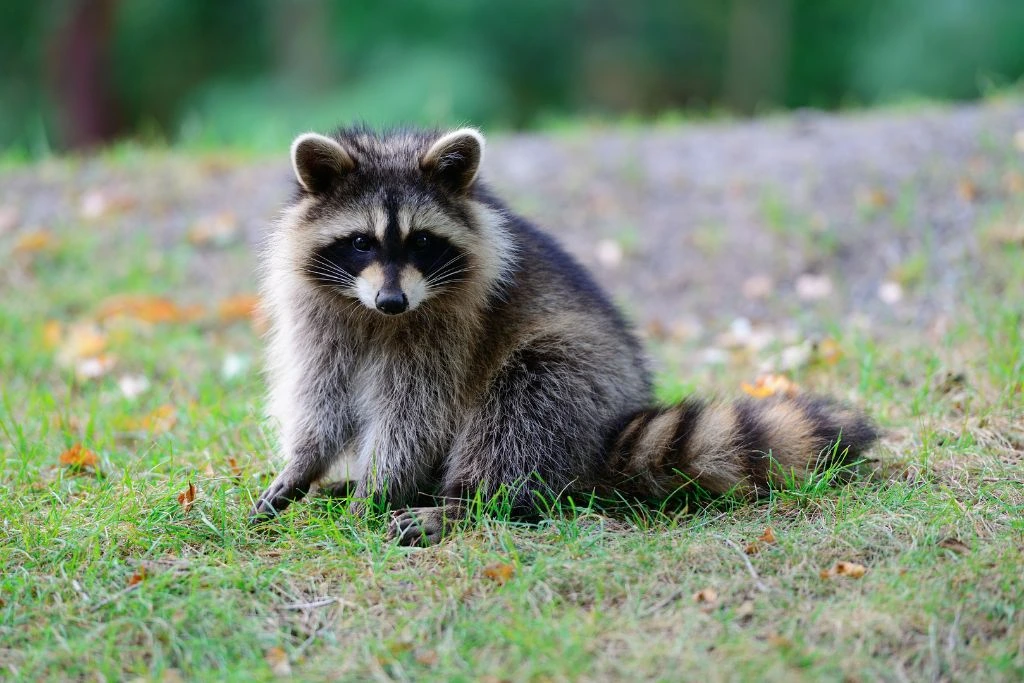
Clever and adaptable creatures, known for their distinctive masked faces and nimble paws, raccoons are opportunistic predators that can be a problem for hawks. They eat fruits, nuts, and small mammals, as omnivores. When food is scarce, they are seen attacking weak hawk nests or fighting with hawks.
Raccoons use a variety of strategies, including speed, stealth, and a willingness to seize opportunities, when hunting. Since raccoons can climb trees, hawk nests up high are not safe from them. When hawks build their nests on the ground, raccoons can exploit these vulnerabilities and raid the nests, targeting eggs or young hatchlings.
Larger Hawks
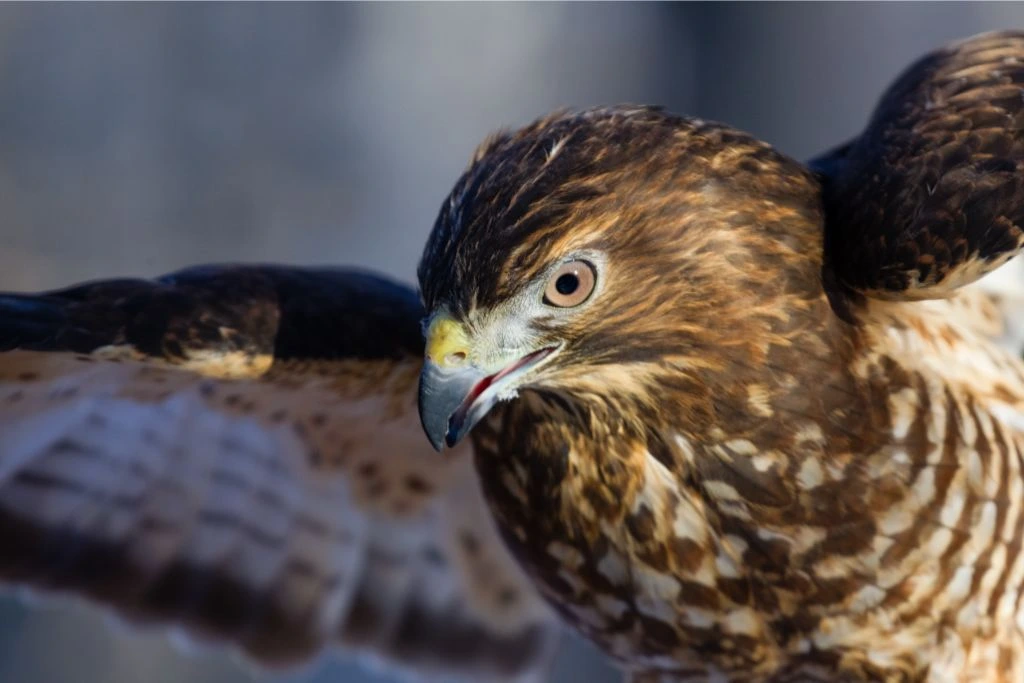
Larger hawks, majestic and powerful raptors that dominate the skies, are formidable predators in their own right. In the avian food chain, larger hawks occupy the upper tiers, with few predators. In certain situations, they may encounter threats from other larger raptors or territorial disputes with similar-sized birds.
These birds employ a combination of keen eyesight, speed, and aerial agility to pursue their prey. They scan the landscape below from elevated perches or soaring high above, using their exceptional vision to spot potential prey, such as small mammals, birds, or reptiles. Once a suitable target is located, larger hawks launch into a swift and controlled dive, known as a stoop, descending rapidly toward their unsuspecting prey.
Red Foxes

Agile and cunning mammals, known for their vibrant fur and bushy tails, red foxes are opportunistic predators that can pose a threat to hawks. Despite largely subsisting on rodents, birds, and insects, red foxes have occasionally been seen chasing hawks. Their adaptability and stealthy nature make them formidable predators in certain situations.
Red foxes utilize a combination of stealth, speed, and strategic planning. They can notice hawks’ movements and calls from far away due to their excellent eyesight and hearing.
They often rely on their stealthy approach, utilizing their agile bodies to move quietly and blend in with their surroundings. They carefully stalk their prey, utilizing cover and shadows to stay concealed until the moment strikes.
Wolves
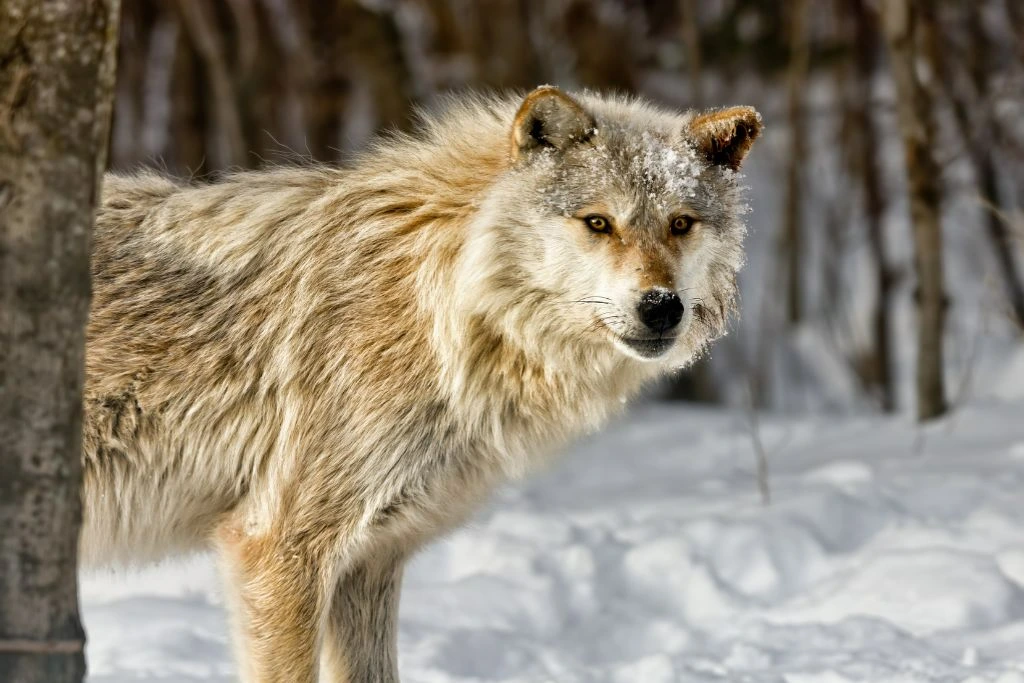
In avian predators, hawks are often regarded as the supreme aerial hunters. With their keen eyesight and swift aerial prowess, they reign over the skies, preying on small mammals, reptiles, and birds. Nature maintains balance, and hawks have their adversaries, including the remarkable and cunning wolves.
Wolves, known for their social nature and cooperative hunting strategies, present a formidable challenge to hawks. While they primarily hunt ungulates, like deer and elk, wolves are opportunistic predators, willing to exploit any available food source. When a wolf pack encounters a hawk in flight, they skillfully deploy their cunning tactics to capture their airborne prey.
Snakes
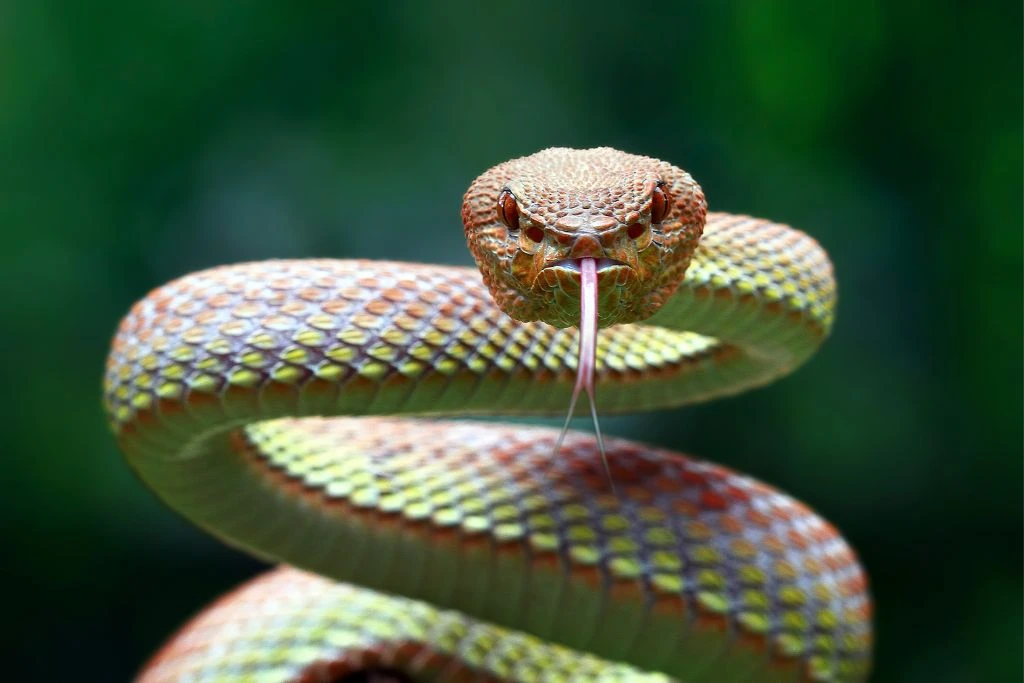
Snakes, fascinating and stealthy reptiles, are not typically perceived as direct predators of hawks. In certain situations, these birds of prey are vulnerable to snakes. Some larger snake species have been seen preying on hawks, especially when the birds are nesting or otherwise defenseless on the ground.
To catch and kill hawks, snakes have developed various unique hunting ways. One of their most remarkable abilities is to remain concealed and unnoticed. Because of their slim builds and ability to fit in with their environments, hawks often overlook snakes until it is too late.
Coyotes
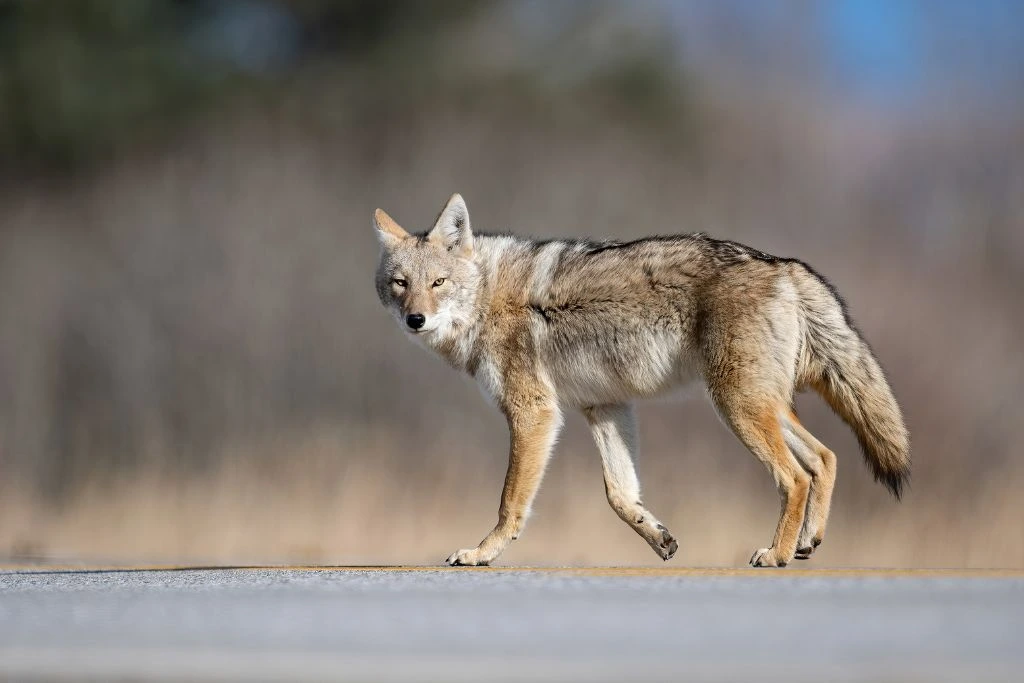
Even though they are both members of the Canidae family and highly adaptive predators, coyotes are rarely considered actual hawk predators. Under specific circumstances, coyotes can be a danger to these birds. They are native to North America and exhibit remarkable intelligence and resourcefulness.
The majority of their diet consists of rodents, birds, and reptiles. However, hawks may be a reasonable target, especially young or injured ones. Coyotes, known for their adaptability and clever hunting techniques, pose a formidable challenge to hawks. Their hunting approach relies on agility, stealth, and opportunism.
How Hawks Defend Themselves
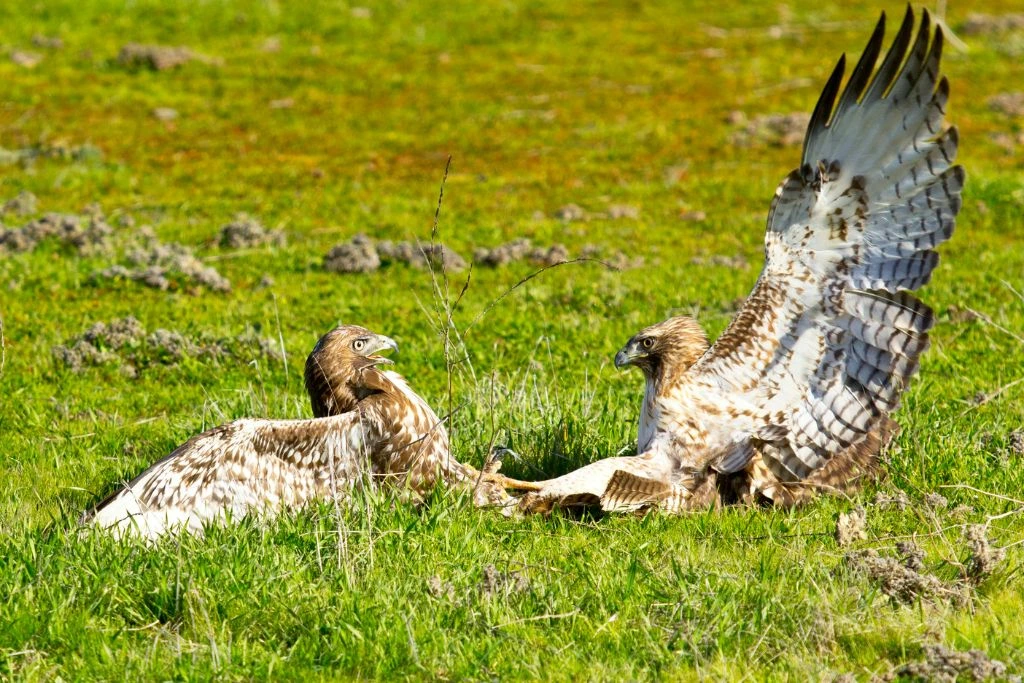
Hawks possess a combination of physical attributes and behaviors contributing to their defense. Their sharp talons and strong beaks serve as powerful weapons against potential predators. These talons, designed to grasp and pierce, allow hawks to firmly hold and defend themselves against any adversary that dares to challenge them.
In addition to their physical weaponry, hawks are known for their exceptional eyesight, which enables them to spot danger from great distances. Their keen vision allows them to detect approaching predators, giving them ample time to react and take evasive action. This acute sense of sight empowers hawks to maintain constant vigilance, enhancing their overall defense.
To protect themselves from the variety of predators that threaten them, hawks have developed a wide range of defensive mechanisms. When confronted by aerial predators, such as eagles, hawks utilize their agility and swift flight capabilities to evade capture. They employ intricate aerial maneuvers, including sudden twists, turns, and dives, to outmaneuver their larger foes.
On the ground, hawks face potential threats from terrestrial predators, like foxes and coyotes. In such situations, hawks rely on their ability to perch in elevated locations, keeping a watchful eye on their surroundings. This elevated vantage point serves two purposes: it gives them an advantageous view to detect potential predators approaching from below and enables them to take swift flight, evading capture by escaping to the skies.
Conclusion
Hawks face threats from predators, such as wolves, snakes, coyotes, eagles, and foxes. Each predator employs unique tactics and strategies to hunt hawks, exploiting their vulnerabilities during takeoff, perching, or moments of distraction. However, hawks possess defenses, including sharp talons, strong beaks, keen eyesight, and agile flight maneuvers.
Understanding predator-prey relationships is paramount in comprehending ecosystems’ intricate dynamics. It reminds us that every species has its role to play, shaping the delicate balance of nature. Predators keep prey populations in check, preventing overpopulation and maintaining a healthy ecosystem.
FAQs
What is A Hawk Afraid Of?
A Hawk may be afraid of larger predators, such as eagles and owls.
Is a Hawk a Carnivore?
Yes, hawks are carnivores.
Where is a Hawk in the Food Chain?
Hawks are typically at the top of the food chain in their ecosystems.
Do Eagles Eat Hawks
Yes, eagles are known to occasionally prey on hawks, especially when their territories overlap.
Do Foxes Eat Hawks
Yes, foxes may opportunistically target young or injured hawks, although such instances are relatively rare.

